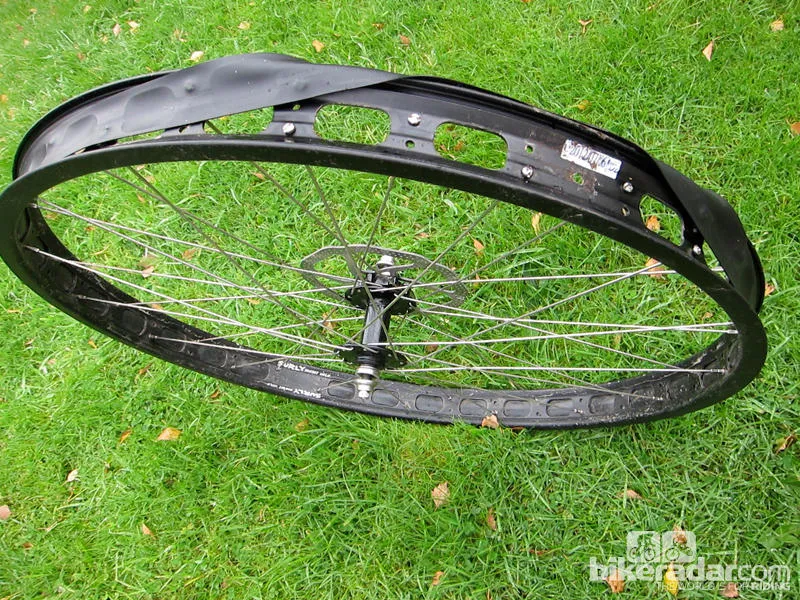In this installment of Trail Tech we’re going to explore an emerging tyre size that is slowly gaining traction, though not to the same extent as fat bikes or 650B (27.5in) mountain bikes. The new 29 size refers to 29in tyres that are 3in wide and offer some of the benefits of fat bikes in more manageable package for general mountain bike use.
In some ways, the arguments for and against 29 mimic those of 650B — big but not as cumbersome as 4in and 5in-wide 26in fat bikes tyres. At the same time, the larger diameter negates some of the weight savings, and a 3in contact patch lacks the same float as the massive 5in contact patch of the largest fat bike treads.
Like 650B, some folks think 29 is the best of both — giving the rider some of the float and traction of a fat bike in a less-cumbersome package. Others see it as the worst of both — it lacks the float of a fat bike and handles like a very long 29er, which it is.
A brief history of 29
Surly doesn't get nearly enough credit for being an industry innovator. It may stick to hardtails constructed from 4130 chromoly tubing, but it’s been quite influential in shaping the types of mountain bikes we ride. The company introduced the Karate Monkey, one of the first production 29er framesets, in 2002. Surly also helped to mainstream fat bikes with the introduction of the Pugsley in 2005. The Krampus, introduced in 2012, continues this trend. (We reviewed the Krampus in 2012 and came away impressed with the bike’s ability clobber singletrack while still handling like a mountain bike.)

The Krampus was the first of two 29 models developed by Surly
The company essentially created a new mountain bike niche when it introduced the Krampus along with the 50mm-wide Rabbit Hole rims and 3in-wide Knard tyres to complete the 29 ensemble.
But why?
“Not to be flippant, but why not?” said Surly’s marketing manager Tyler Stilwill.
“We saw what was gained from riding fat bikes, and we saw their drawbacks," Stilwill said. "We love the 29er platform and Surly has always been about getting the biggest wheel into a frame that we can. Until the Krampus, 29ers maxed out at 2.5in, not nearly as wide as the 2.75/2.85in tyres that were out there for 26ers. Granted, not many folks made frames that would fit tyres that wide, but we did (and do). We're not out to capture some kind of market share; we're reaching for a ride quality that we haven't yet found."
Pros and cons of 29
Stilwill notes that fat bikes were originally designed to conquer terrain that was otherwise unrideable to traditional mountain bikes: snow and sand.
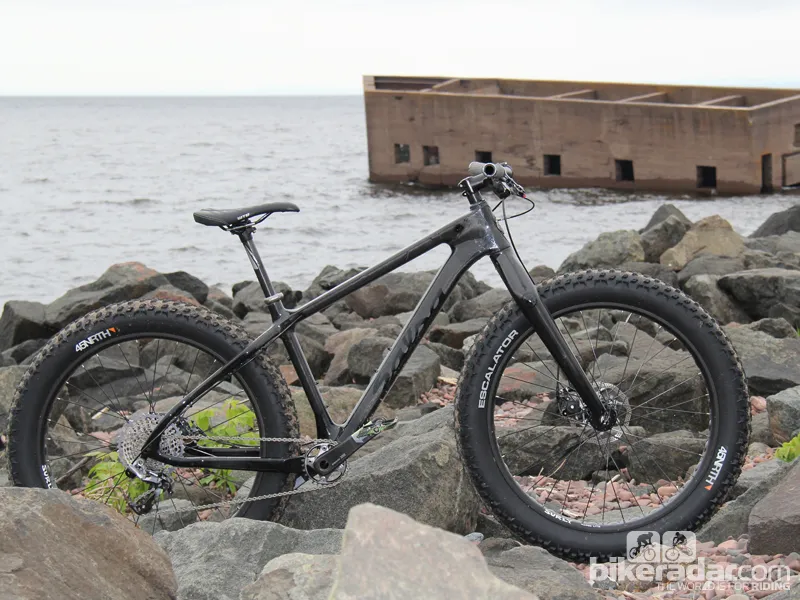
While 29 can take the edge off rough terrain, the tyres lack the float and massive traction of fat bikes in snow and sand
“The 29 platform wasn't built for those conditions; 3in tyres just don't do as well as fat bike tyres,” said Stilwill. "Bottom line is that 29 doesn't perform as well as fat bikes in the conditions that fat bikes were truly designed for. On singletrack and for bushwhacking, in ‘normal’ conditions 29 is faster."
While they’re not as fat, as 26in fat bike tyres, the larger outside diameter of 29 tyres exacerbates fitting issues associated with big wheels and shorter riders. If you don’t feel comfortable on a 29er, making the tyres even larger is not going to work to your benefit.
On the plus side, while 3in-wide 29er tyres don’t have the massive float of a fat bike, they don’t come with the same set of engineering hurdles, either.
The Krampus, for example, uses the traditional 100mm front and 135mm rear dropout spacing and takes a 73mm threaded bottom bracket. This makes it easy for folks with a stockpile of older mountain bike components to transfer them over to a 29 frameset.
Additionally, one can — with just a few millimeters of clearance to spare — run a 29 tire with a suspension fork.
Last but certainly not least, for recreational trail riders looking for an affordable, low-maintenance, one-bike quiver, 29 may make a lot of sense. The tyres take the edge off small to medium bumps and diminish the need for an expensive suspension fork.
“Very few people would ever choose to have full-fat as their only mountain bike. I can see 29 being a much more viable option to be that sole MTB in the shed,” said Sam Alison, owner of Singular Cycles, a small UK-based company that is in the midst of developing its own 29 model, the Rooster.
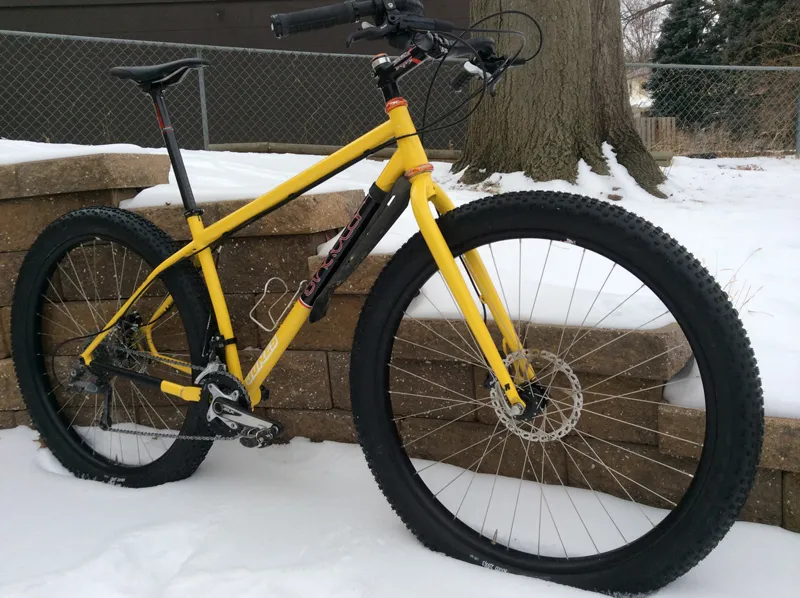
The Rooster is one of a small but growing number of production alternatives to Surly's Krampus and ECR
Where will 29 go from here?
Much like the early days of the 29in wheelsize, 29 is becoming very popular with custom frame builders, and as in the early days of 29ers, the lack of production options increases the demand for 29 with frame builders.
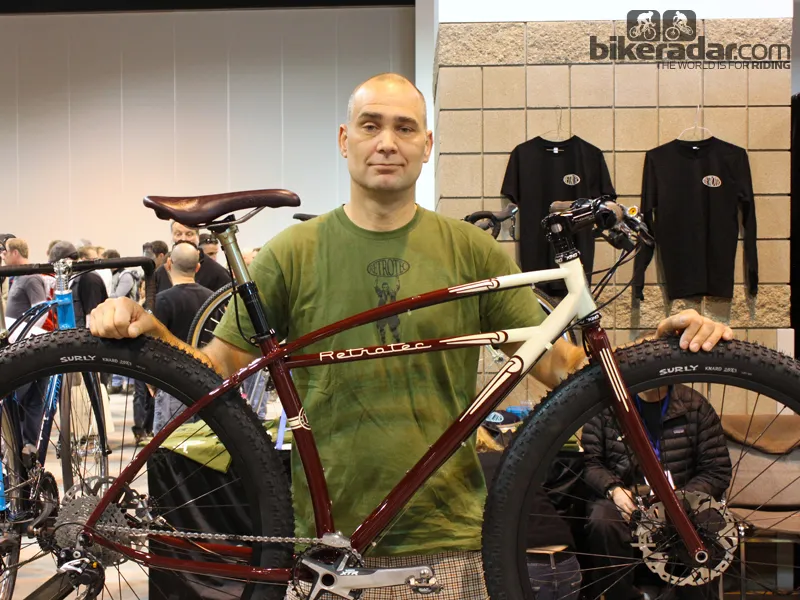
At the 2013 North American Handmade Bicycle Show the award for ‘Best Mountain Bike’ went to a 29 bike built by Curtis Inglis. Inglis notes that 29 orders are pouring in and that he just built one for himself.
The size also faces some of the same challenges as 29in wheels did a decade ago, specifically, a lack of component options, i.e., tire choices.
“The main cons are weight, tyres and availability and fitting them in to existing frames and forks. But those are the exact same things we were saying about 29ers 12 years ago. I remember when we only had the [WTB Nano Raptor], so it's reminiscent of those times,” said Alison.
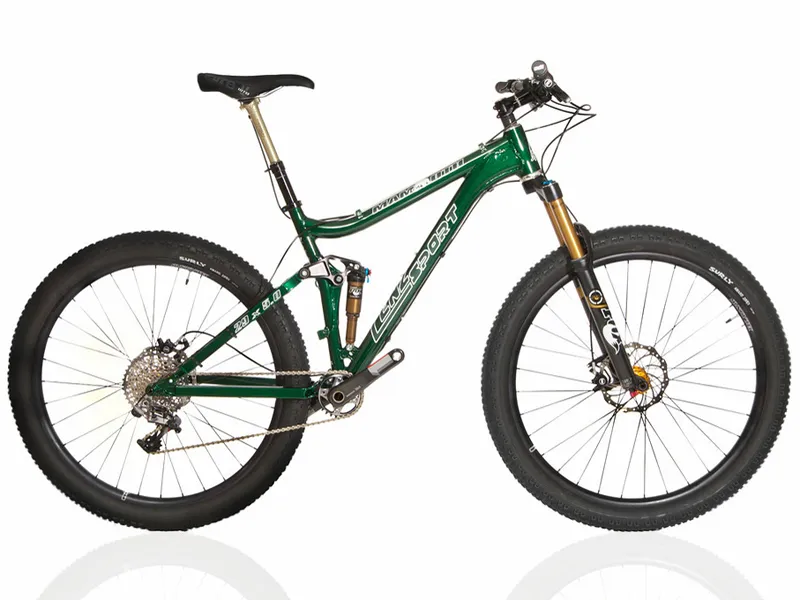
Lenz Sport is the first company to produce a purpose-built 29+ full suspension, the Fat-Moth
Fat 29in tyres on extra wide rims may be gaining a foothold with custom builders and a handful of smaller brands, but will it ever gain widespread acceptance?
“It's hard for me not to believe that these bikes will gain widespread acceptance. How is more versatility a bad thing? I only have my experience and the experience of the other folks in the brand. It is by far my favorite trail bike of all time,” said Stilwill.
While Alison sees the benefits of fat 29in tyres, he also fears that 29+ might be “a size too far.”
“I'm a bit concerned that it may just end up being one option too many among a plethora of available tire sizes," Alison said. "That would be a real shame because I think it offers a lot more advantages than some others.”
What do you think? Does 29+ make sense for where and how you ride? Leave a comment below.

